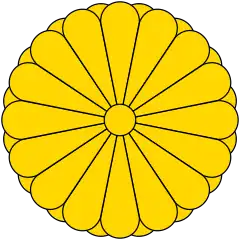
Hibakujumoku (Japanese: 被爆樹木; also called survivor tree or A-bombed tree in English) is a Japanese term for a tree that survived the atomic bombings of Hiroshima and Nagasaki in 1945. The term is from Japanese: 被爆, romanized: hibaku, lit. 'bombed, A-bombed, nuked'[1] and Japanese: 樹木, romanized: jumoku, lit. 'trees and shrubs'.[2]
Damage
The heat emitted by the explosion in Hiroshima within the first three seconds at a distance of three kilometres from the hypocenter was about 40 times greater than that from the Sun.[3] The initial radiation level at the hypocenter was approximately 240 Gy.[3] According to Hiroshima and Nagasaki: The Physical, Medical, and Social Effects of the Atomic Bombings, plants suffered damage only in the portions exposed above ground, while portions underground were not directly damaged.[4]
Regeneration
The rate of regeneration differed by species. Active regeneration was shown by broad-leaved trees.[4] Approximately 170 trees that grew in Hiroshima in 2011 had actually been there prior to the bombing.[5] The oleander was designated the official flower of Hiroshima for its remarkable vitality.[4]
Types of hibakujumoku
Hibakujumoku species are listed in the UNITAR database,[6] shown below, combined with data from Hiroshima and Nagasaki: The Physical, Medical, and Social Effects of the Atomic Bombings. A more extensive list, including distance from the hypocenter for each tree, is available in Survivors: The A-bombed Trees of Hiroshima.[7]
List
| Common name | Binomial name |
|---|---|
| Weeping willow | Salix babylonica |
| Black locust | Robinia pseudoacacia |
| Chinaberry | Melia azedarach var. japonica |
| Fig tree | Ficus sp. |
| Bamboo | Bambuseae tribe |
| Azalea | Genus Rhododendron |
| Hemp palm | Trachycarpus fortunei |
| Oleander | Nerium indicum |
| Japanese spindle | Euonymus japonicus |
| Kurogane holly | Ilex rotunda |
| Japanese aralia | Fatsia japonica |
| Nettle tree | Celtis sinensis var. japonica |
| Camphor tree | Cinnamomum camphora |
| Silverthorn | Elaeagnus pungens |
| Japanese persimmon | Diospyros kaki |
| Eucalypt | Eucalyptus melliodora |
| Giant pussy willow | Salix chaenomeloides |
| Southern catalpa | Catalpa bignonioides |
| Sago palm | Cycas revoluta |
| Tree peony | Paeonia suffruticosa |
| Shirodamo | Neolitsea sericea |
| Cherry tree | Prunus × yedoensis |
| Crape myrtle | Lagerstroemia indica |
| Ginkgo | Ginkgo biloba |
| Oriental plane | Platanus orientalis |
| Chinese parasol tree | Firmiana simplex |
| Japanese black pine | Pinus thunbergii |
| Muku tree | Aphananthe aspera |
| Japanese hackberry | Celtis jessoensis |
| Jujube | Ziziphus jujuba |
| Japanese apricot | Prunus mume var. purpurea |
| Amanatsu | Citrus natsudaidai |
| Tabunoki | Machilus thunbergii |
| Bohdi tree | Tilia miqueliana |
| Japanese camellia | Camellia japonica |
| Japanese quince | Chaenomeles speciosa |
| Chinese juniper | Juniperus chinensis |
| Crinum lily | Crinum asiaticum var. japonicum |
Surviving trees in Nagasaki
Although not as well known as the hibakujumoku in Hiroshima, there are a number of similar survivors in the vicinity of the hypocenter in Nagasaki. Approximately 50 of these trees have been documented in English.[8]
See also
References
- ↑ "被爆 - Wiktionary". en.wiktionary.org. Wikimedia Foundation. Retrieved 18 November 2016.
- ↑ "樹木 - Wiktionary". en.wiktionary.org. Retrieved 18 November 2016.
- 1 2 Frank Barnaby; Douglas Holdstock, eds. (2014). Hiroshima and Nagasaki: Restrospect and Prospect. Routledge. ISBN 978-1135209933.
- 1 2 3 Peter Del Tredici. "Hibaku Trees of Hiroshima" (PDF). Arnold Arboretum. Retrieved 20 May 2014.
- ↑ "Green Legacy Hiroshima: Spreading Seeds Of Peace Across The World". ANT-Hiroshima News. Retrieved 20 May 2014.
- ↑ "Database of Hibaku Jumoku ? Atomic-Bombed Trees of Hiroshima" (PDF). UNITAR. Archived from the original (PDF) on 29 March 2017. Retrieved 20 May 2014.
- ↑ Petersen, David & Conti, Mandy. (2008). Survivors: The A-bombed Trees of Hiroshima. Lulu Press, Morrisville, NC, USA. ISBN 978-1-4092-0501-2
- ↑ Petersen, David. (2012). Prayers in Stone: Nagasaki's A-bomb Heritage Sites. Lulu Press, Morrisville, NC, USA. ISBN 978-0-359-47868-2
